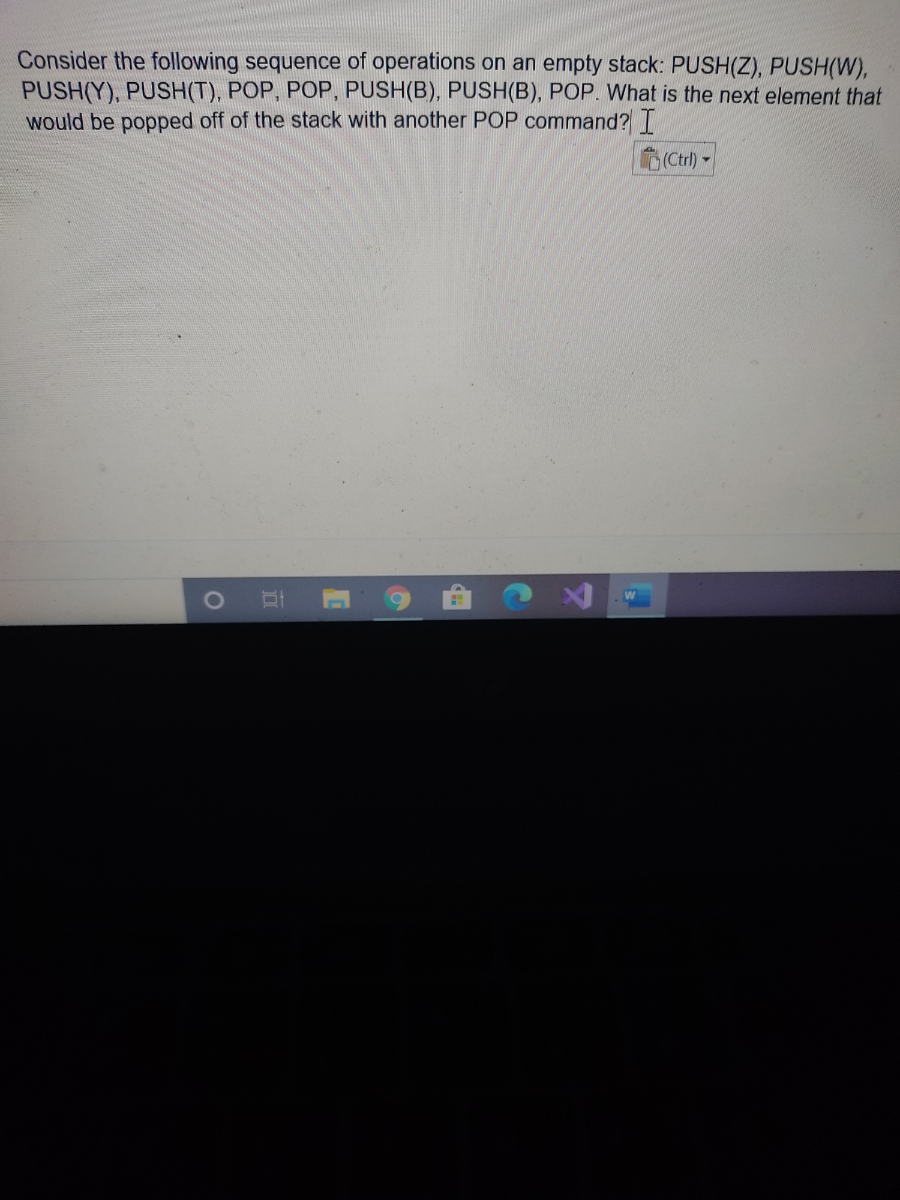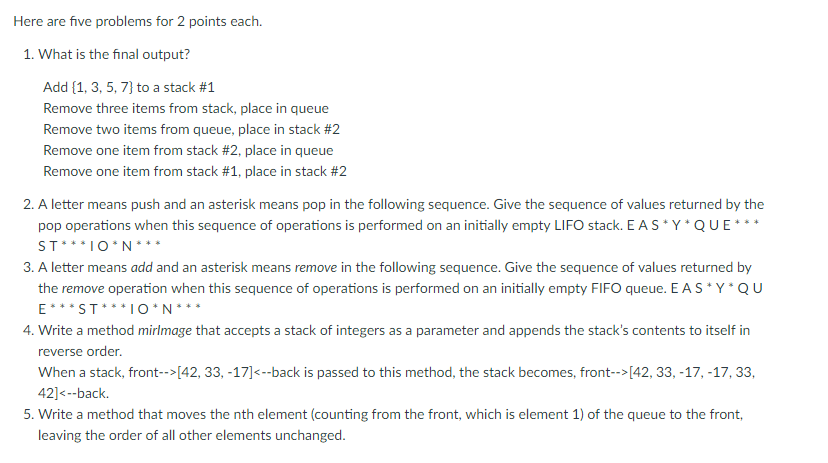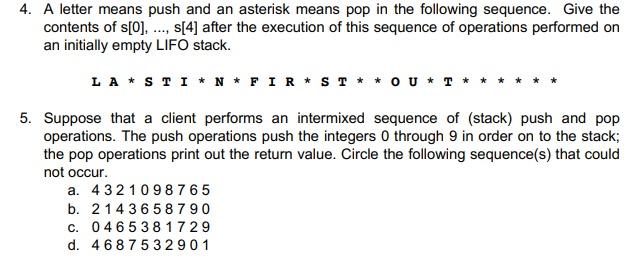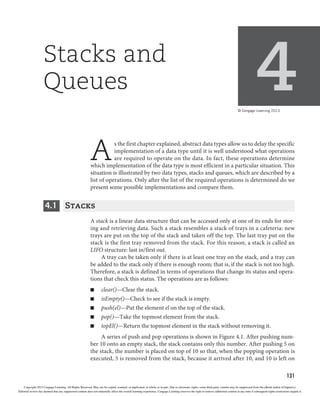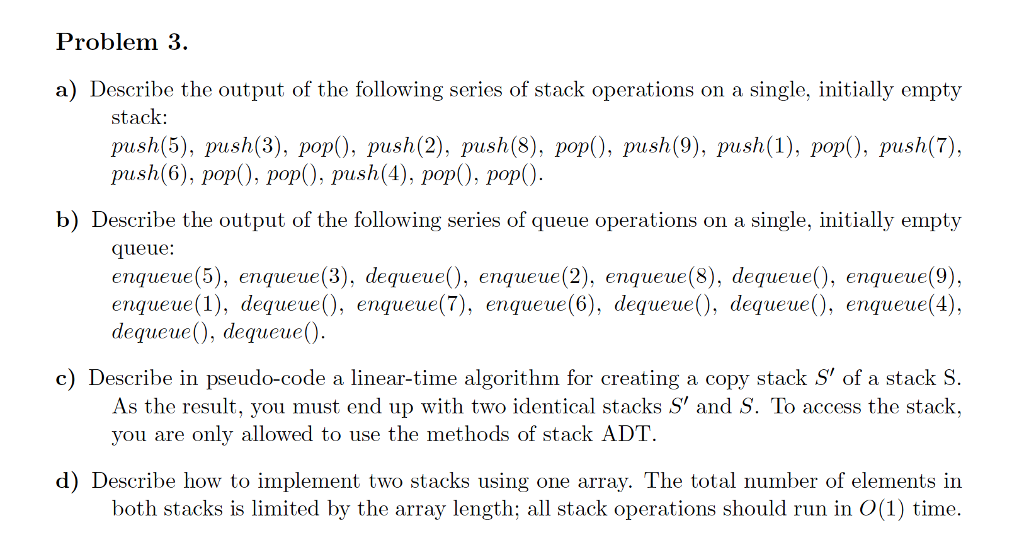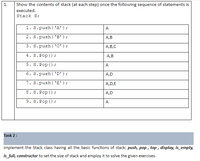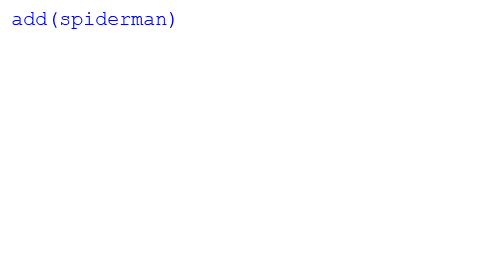
2.docx - 2-Stacks and Queues Note: You can select and do some questions according to your ability only. We would like to note you that the more | Course Hero

Lab 5 abstract-data-types-algorithms - Lab #5: Abstract Data Types, Algorithms Complete this - Studocu

Tutorial for Linear Data Structures - COR-IS1702 Computational Thinking (G8) AY2019/2020 Term 2 1 - Studocu
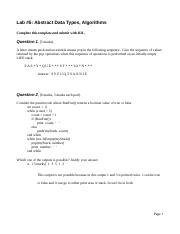
lab_5_abstract-data-types-algorithms main (1).doc - Lab #5: Abstract Data Types, Algorithms Complete this template and submit with D2L. Question 1, [5 | Course Hero

04 LAB A Implementing Stacks & Queues - Answers | PDF | Queue (Abstract Data Type) | String (Computer Science)

A letter means push and an asterisk means pop in the following sequence. Give the sequence of values returned by the pop operations when this sequence of operations is performed on an


